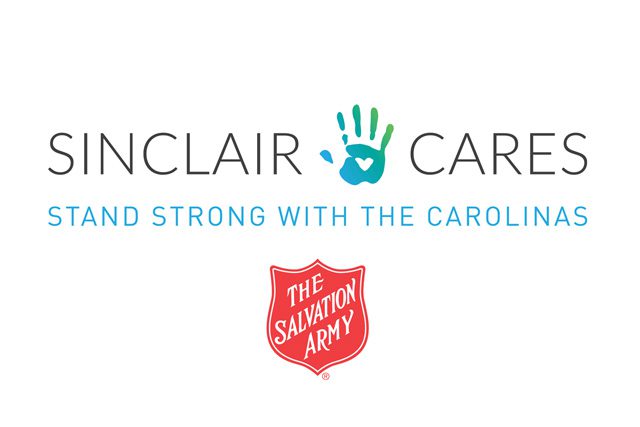How to move beyond ‘friendly’ to include all employees
Imagine coming to work with your colleagues every day, excited to impact the community you serve. You have made genuine connections and you feel proud about the work you’re getting done. You’re able to bring your personality and experience into meaningful connections with those around you. You have found the space to laugh with your colleagues while still working hard and sharing in a positive experience. Some of the others are often quiet, but that is OK because you know they will speak up when needed.
– Review Brooke Lynn Brewer’s seven steps to bring diversity and inclusion practices to any team, perhaps even anonymously surveying your team on their own perceptions of the diversity and inclusion efforts in your workplace. Identify one area that you can work on this week. Write it down in a visible spot at your desk or set a daily alarm to remind you. Do at least one thing each day to be intentional in that area.
Now imagine another perspective at the same job; you’re also coming to work with your colleagues every day, excited to impact the community you serve. You work hard and genuinely enjoy the work. You feel like you are not as close with some of your peers, but there are others with whom you’ve bonded. You consistently choose your words carefully. Occasionally conversations come up and you feel unincluded, even when you are right next to those speaking. Was there a meeting that you missed? Why does it seem like your hair and clothing choices are more important topics than your team contributions? Some of the humor feels like it is at your expense or the expense of those around you. If you choose to address it, you are afraid that the other person may feel bad. You don’t want to be the bad guy, and you do enjoy your job overall.
What could be the problem? How can this work space feel so different for two people equally invested in the company’s mission?
Often times a well-intentioned environment can celebrate people’s identities and work styles, while also inadvertently leaving “others” to feel underrepresented. We all have different personality types, learning styles, backgrounds, family dynamics, traditions and values. By valuing and celebrating these differences, we can truly create a strong and cohesive team.
The Salvation Army in Denver is making the commitment to address workplace inclusivity. I brought my own education and experience to the Army as an outside consultant. By training a wide range of youth and adults in diversity and inclusion for more than seven years, I have been able to witness and facilitate growth on teams with different demographic breakdowns.
After working with The Salvation Army, I learned about specific team needs and developed a full-day training for the entire staff. I also provided a follow-up training for staff, who lead the upcoming youth summer program. All team members were invested, asked questions and practiced vulnerability by sharing their own experiences. In reflecting on this process, I’ve created seven steps below that any Salvation Army unit or other organization can follow to bring diversity and inclusion practices to their team.

Prioritize diversity and inclusivity
It starts at the top, and must become a shared priority with all staff.
Determine your capacity
Do you have time for a full-day training? Will this need to be an ongoing topic during designated staff meetings? Can you spend money on an outside consultant? Is there someone on the team who can take point for gathering resources and leading the discussions? Bringing in an outside entity can provide a unique and valuable perspective to staff. Additionally, it may provide comfort to participants who may feel uncomfortable with current employees.
Identity
Whether you’re with an outside consultant or on your own, you will never understand how to embrace differences if you don’t do the work to explore your own identity and the values that guide your decisions.
Blind spots
Based on our individual life experiences, we all have blind spots. Acknowledge that they exist and make a commitment to address them. Ask questions, learn more and know there are resources available to help you think about unintentional offensive, microaggression or exclusive language.
Be relationship-centered
Focus on getting to know your colleagues, especially the ones with backgrounds most different from your own. Try to move toward the difference, show interest and try to leave out critiques. Make sure you are pronouncing names correctly no matter how many times you have to ask. Be patient with different styles and be willing to adjust to the needs of others.
Practice having difficult conversations
Telling someone they made you feel excluded can be difficult. It may also feel like a burden to address people or you may be worried about how you’re perceived. Alternatively, hearing someone tell you that your positive intentions were received as offensive or exclusive can be difficult to hear. Do not allow “what you meant” to get in the way of how it made someone feel. Having these discussions takes practice just like anything. Practice with colleagues you trust and commit to address situations and receive feedback.
Embrace the ongoing learning process
One training or team meeting isn’t going to change everything. This in an ongoing process that requires commitment, building skills and practice.
Perceptions often can become a reality to those who are excluded. The longer you ignore the needs of those with minority backgrounds or views, the more you are giving the silent OK to certain exclusive behaviors. A workspace that is simply “friendly” is not necessarily a space that values its employees. We need clear direction in order to create the inclusive workspace we strive for. It will never happen, however, if we wait for a solution to develop on its own. We all have good intentions and we all want to be excited about the work we are doing. When we address differences head-on and with a desire to include others, the result is a better workspace for everyone.

















